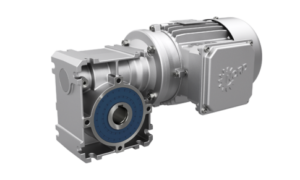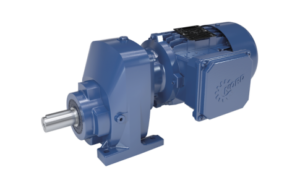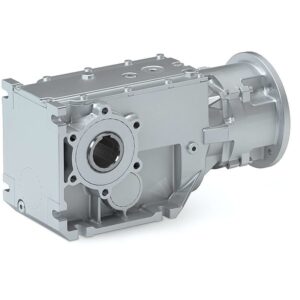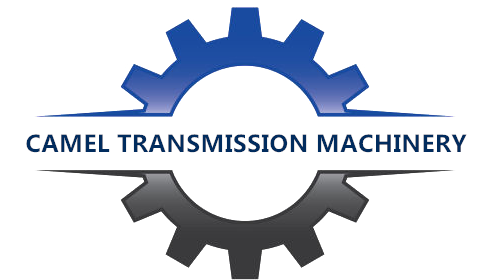The two main factors traditionally used to measure gear transmission performance are: load capacity and fatigue life. Transmission noise and transmission accuracy are often ignored. With the successive promulgation of the ISO14000 and ISO18000 standards, the importance of controlling gear transmission noise is becoming more and more important, and the requirements of industrial development and demand on the transmission error of high-precision equipment are becoming more and more stringent (gear transmission backlash).

Manufacturing Reasons And Countermeasures
1. Error effects
Tooth profile error, tooth pitch error, and tooth direction error in the manufacturing process are the main errors that cause transmission noise. It is also a problem that is difficult to guarantee the accuracy of gear transmission.
The gear with small tooth profile error and small tooth surface roughness, under the same test conditions, its noise is 10dB lower than that of ordinary gears. For gears with small pitch error, under the same test conditions, the noise level is 6-12dB lower than that of ordinary gears. However, if there is a tooth pitch error, the influence of the load on the gear noise will be reduced.
Tooth direction error will cause transmission power not to be transmitted in the full tooth width. This or that end surface of the steering tooth in the contact area will increase the deflection of the tooth due to the local force, resulting in an increase in the noise level. However, under high load, tooth deformation can partially compensate for the tooth orientation error. Gear noise is directly related to transmission accuracy.
2. Assembly concentricity and dynamic balance
The misalignment of the assembly will cause the unbalance of the shafting operation, and due to the loose half of the tooth meshing half side, the noise will increase together. The unbalance during assembly of high-precision gear transmission will seriously affect the accuracy of the transmission system.
3. Tooth surface hardness
With the development of gear hard tooth surface technology, its large load capacity, small size, light weight, high transmission accuracy and other characteristics make it more and more widely used. However, the carburizing and hardening used to obtain the hard tooth surface deforms the gear, resulting in increased gear transmission noise and shortened service life. In order to reduce noise, the tooth surface needs to be finished. At present, in addition to the traditional grinding method, a hard tooth surface scraping method has been developed to reduce the impact of gear meshing and meshing by correcting the tooth tip and tooth root, or reducing the tooth profile of the active and passive wheels. , Thereby reducing gear transmission noise.
4. System index verification
The machining accuracy of the parts before assembly and the selection method of the parts (complete interchange, group selection, single-part selection, etc.) will affect the accuracy level of the system after assembly, and the noise level is also affected. Therefore, the verification (or calibration) of the various indicators of the system after assembly is critical to the control of system noise.

Installation Reasons And Countermeasures
1. Vibration reduction and blocking measures
When installing the gear transmission system, try to avoid resonance between the fuselage and the foundation support and connecting parts, resulting in noise. Gear transmission systems often cause one or several gears to resonate in a certain speed range. Except for design reasons, the resonance position has not been found out during installation without empty test. And it is directly related to taking corresponding damping or blocking measures. For some gear transmission systems that require low transmission noise and vibration (such as testing instruments), high toughness and high damping basic materials (such as the epoxy resin mortar basic material developed by the Metallurgical Design and Research Institute) should be used to reduce the occurrence of noise and vibration .
2. Geometric accuracy adjustment
Because the geometric accuracy of the installation does not meet the requirements of the standard, the transmission system will resonate and generate noise. This should be directly related to the improvement of the installation process, the increase of tooling, and the guarantee of the overall quality of the assembly personnel.
3. Loose parts
During installation, due to the looseness of individual components (such as bearing pre-tensioning mechanism, shafting positioning mechanism, shift fork limit mechanism, etc.), the system positioning is inaccurate, abnormal position meshing, shafting movement, vibration and noise are generated. This series needs to start from the design structure, try to ensure the stability of the connection of each organization, and adopt a variety of connection methods.
4. Damaged transmission parts
During installation, improper operation damages the transmission components, resulting in inaccurate movement or instability of the system; high-speed moving components cause oil film vibration due to damage; artificial imbalance of moving parts; vibration and noise are caused. These reasons must be noted and avoided as much as possible during the installation process. Damaged parts that cannot be repaired must be replaced to ensure that the system obtains a stable noise level.

Reasons And Countermeasures For Use And Maintenance
The correct use and maintenance of the gear transmission system can not reduce the noise level of the system and ensure the transmission accuracy, but it can prevent the deterioration of its indicators and increase the service life.
1. Clean the inside of the drive system
The internal cleanliness of the transmission system is the basic condition to ensure the normal operation of the gears. The entry of any impurities and dirt will affect and damage the gear transmission system, eventually causing noise and damaging the transmission system.
2. The working temperature of the system
Ensure the normal operating temperature of the transmission system, prevent the system from deforming due to excessive temperature rise, resulting in abnormal meshing, and can prevent the increase of noise.
3. Timely lubrication and correct use of oil
Careless lubrication and incorrect use of lubricating grease will cause immeasurable damage to the system. Ensure that the system is properly lubricated in time, so that the system can be kept within a certain range of noise levels, and the deterioration trend can be delayed. For high-speed gears, tooth surface friction will generate a lot of heat. Improper lubrication will cause damage to the gear teeth, affect accuracy, and increase noise. The design requires the gear pair to have an appropriate clearance (the clearance between the non-working surfaces of the meshing gear teeth to compensate for thermal deformation and store lubricating grease). The correct use and selection of lubricating grease can ensure the safe and effective operation of the system and stabilize the noise level.
4. Correct use of gear motion system
Use it in accordance with the normal operating sequence of the system to avoid damage and damage to the system to the utmost extent and ensure a stable noise level. Use the system in the normal load range of the system, because the transmission noise of the gear transmission system increases with the increase of the load.
5. Regular maintenance and maintenance
Regular maintenance (oil change, replacement of worn parts, loose parts of fasteners, removal of debris in the system, adjustment of the gaps of various parts to the standard specified values, verification of various geometric accuracy, etc.) can improve the system’s ability to resist noise level degradation , To maintain the stability of the system.
In Conclusion
Gear transmission noise control is a systematic project, which involves the whole process of gear transmission design, manufacturing, installation, use and maintenance until update. It not only puts forward many requirements for designers, manufacturers, but also installation, use and maintenance personnel. If any of the above links are not effectively controlled, the gear transmission noise control will be invalidated.
